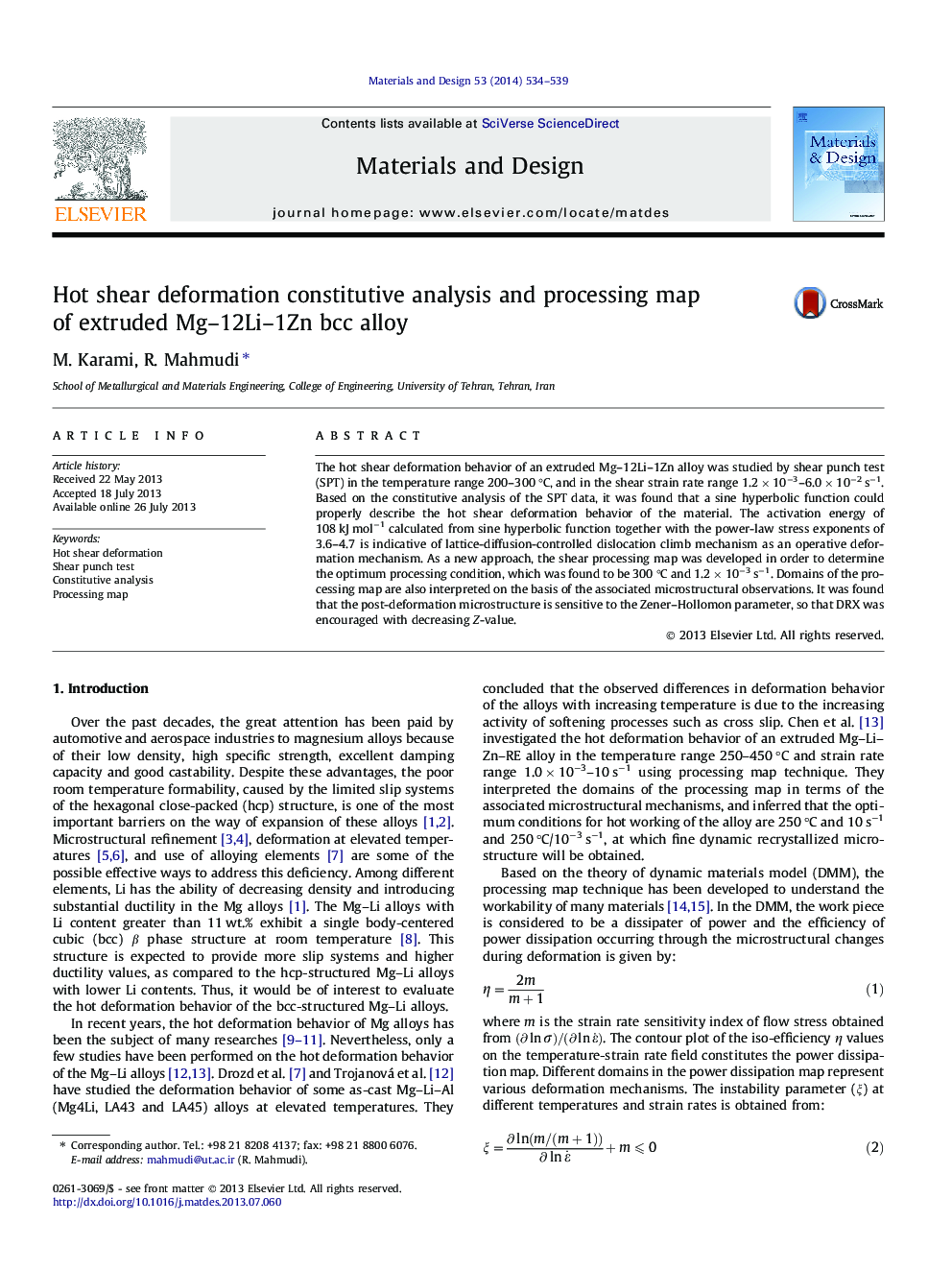| Article ID | Journal | Published Year | Pages | File Type |
|---|---|---|---|---|
| 829771 | Materials & Design (1980-2015) | 2014 | 6 Pages |
•Shear punch test was used to evaluate hot deformation behavior of an Mg–Li–Zn alloy.•A sine hyperbolic function properly describes the hot shear deformation behavior.•Deformation mechanism was lattice-diffusion-controlled dislocation climb.•Deformation microstructure in sheared zone was sensitive to the Z-parameter.•Optimum processing condition of 300 °C and 1.2 × 10−3 s−1 was obtained from processing map.
The hot shear deformation behavior of an extruded Mg–12Li–1Zn alloy was studied by shear punch test (SPT) in the temperature range 200–300 °C, and in the shear strain rate range 1.2 × 10−3–6.0 × 10−2 s−1. Based on the constitutive analysis of the SPT data, it was found that a sine hyperbolic function could properly describe the hot shear deformation behavior of the material. The activation energy of 108 kJ mol−1 calculated from sine hyperbolic function together with the power-law stress exponents of 3.6–4.7 is indicative of lattice-diffusion-controlled dislocation climb mechanism as an operative deformation mechanism. As a new approach, the shear processing map was developed in order to determine the optimum processing condition, which was found to be 300 °C and 1.2 × 10−3 s−1. Domains of the processing map are also interpreted on the basis of the associated microstructural observations. It was found that the post-deformation microstructure is sensitive to the Zener–Hollomon parameter, so that DRX was encouraged with decreasing Z-value.
